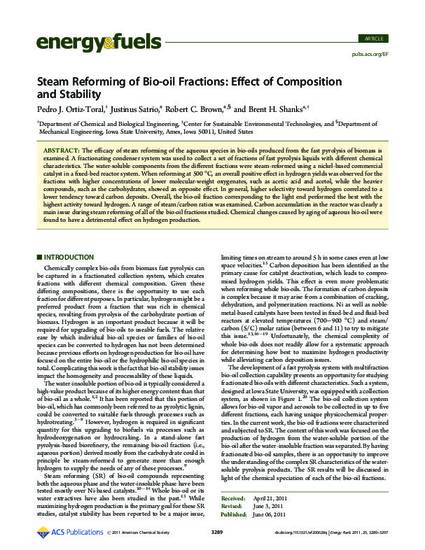
The efficacy of steam reforming of the aqueous species in bio-oils produced from the fast pyrolysis of biomass is examined. A fractionating condenser system was used to collect a set of fractions of fast pyrolysis liquids with different chemical characteristics. The water-soluble components from the different fractions were steam-reformed using a nickel-based commercial catalyst in a fixed-bed reactor system. When reforming at 500 °C, an overall positive effect in hydrogen yields was observed for the fractions with higher concentrations of lower molecular-weight oxygenates, such as acetic acid and acetol, while the heavier compounds, such as the carbohydrates, showed an opposite effect. In general, higher selectivity toward hydrogen correlated to a lower tendency toward carbon deposits. Overall, the bio-oil fraction corresponding to the light end performed the best with the highest activity toward hydrogen. A range of steam/carbon ratios was examined. Carbon accumulation in the reactor was clearly a main issue during steam reforming of all of the bio-oil fractions studied. Chemical changes caused by aging of aqueous bio-oil were found to have a detrimental effect on hydrogen production.
Available at: http://works.bepress.com/brent_shanks/11/

Reprinted (adapted) with permission from Energy and Fuels 25 (2011): 3289, doi: 10.1021/ef200628q. Copyright 2011 American Chemical Society.